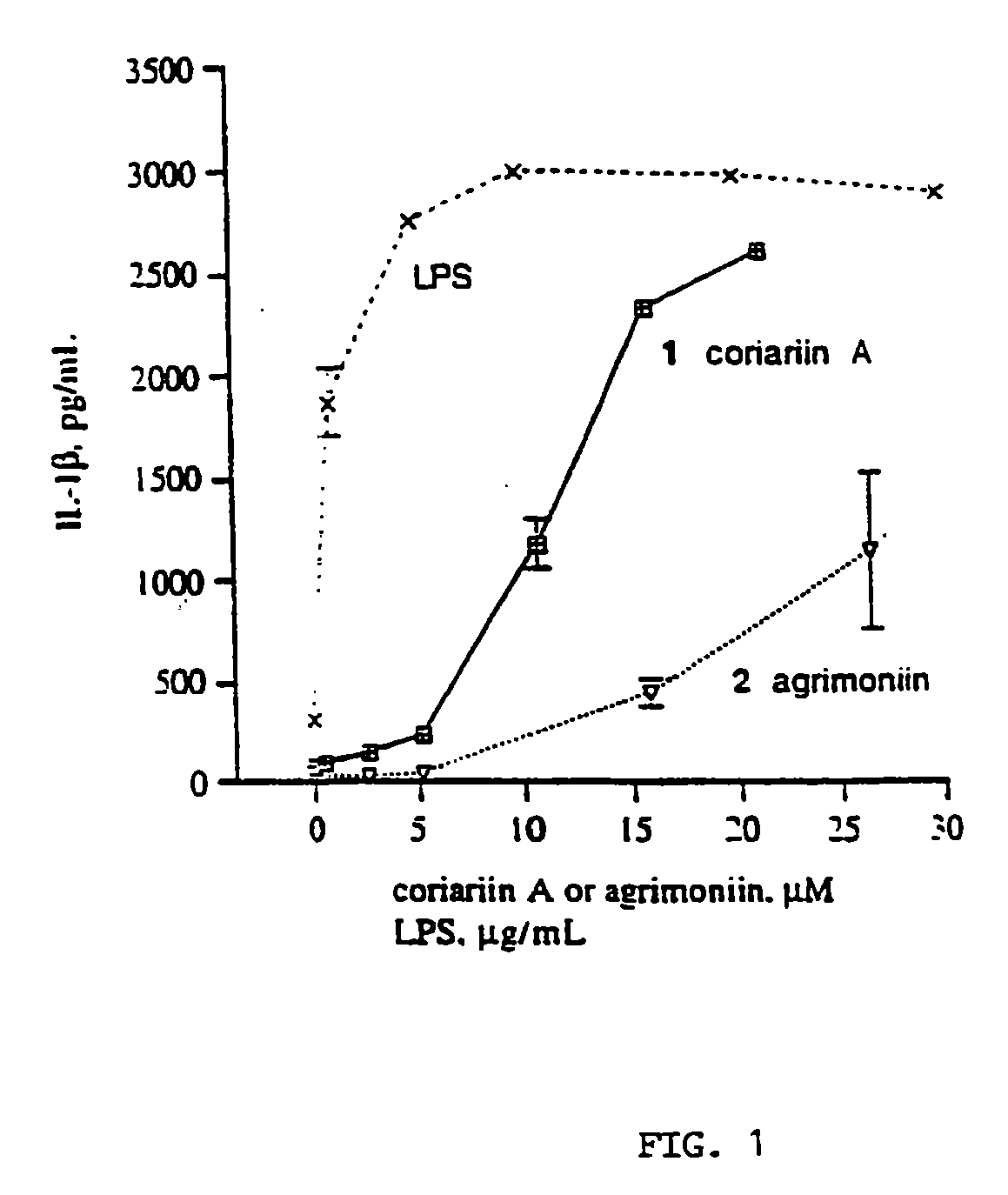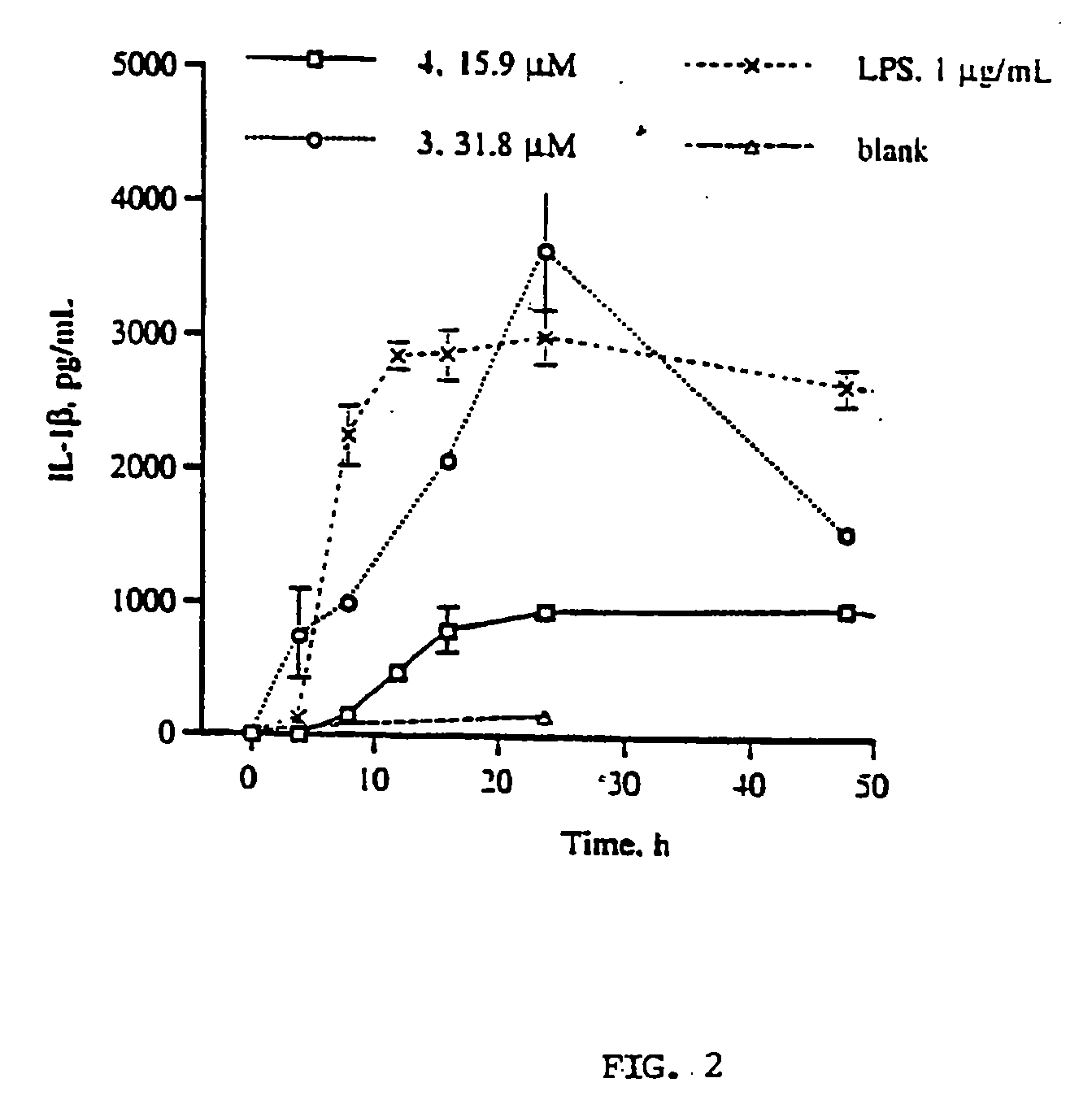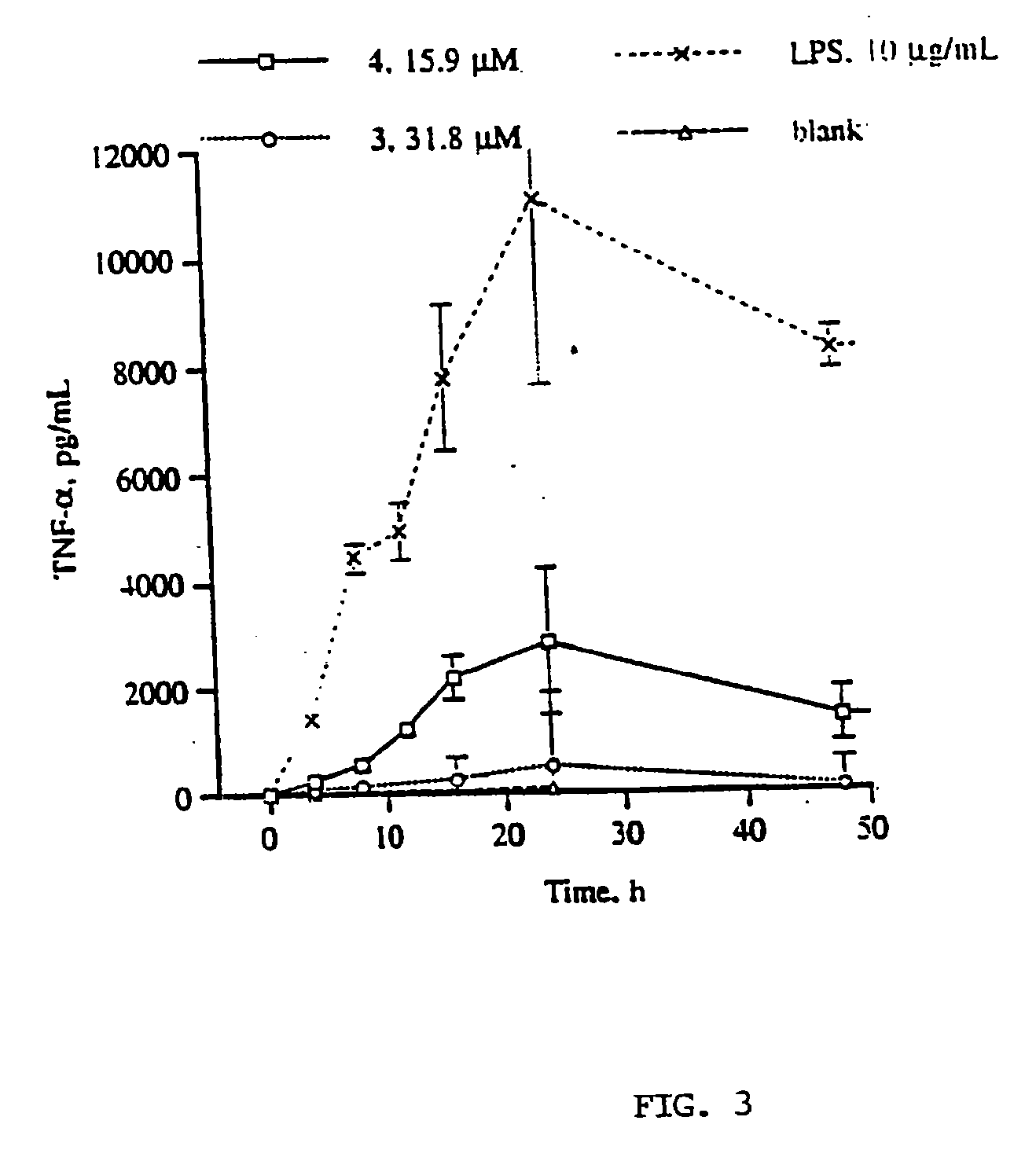Gallotannins and elligitannins as regulators of cytokine release
a technology of cytokine and elligitannin, which is applied in the direction of esterified saccharide compounds, antibacterial agents, drug compositions, etc., can solve the problems of more than 20,000 deaths, potentially lethal condition septic shock, and sepsis and septic shock, and achieve the effect of promoting the release of tnf-
- Summary
- Abstract
- Description
- Claims
- Application Information
AI Technical Summary
Benefits of technology
Problems solved by technology
Method used
Image
Examples
example 1
Synthesis of Dimeric Gallotannin and Ellagitannins
[0087]Nuclear magnetic resonance spectra (1H NMR, 13C NMR) were recorded on either 200, 300 or 360 MHz (1H ) spectrometers. Low resolution fast atom bombardment mass spectra (FABMS) were obtained in a 2-nitrophenyl octyl ether (NPOE) matrix or in a nitrobenzyl alcohol (NBA) matrix. High resolution fast atom bombardment mass spectra were run at the University of Texas at Austin. Circular dichroism (CD) measurements used the wavelength range 200 nm to 350 nm. Scanning at 0.5 nm intervals with an averaging time of 10.0 s at 25° C. in a 1 mm cell. The concentration of the solution(s) used was 1 mg / mL. Liquid (flash) column chromatography was carried out using 32-63 μm silica gel and the indicated solvent. Combustion analyses were performed by Midwest Microlab, Indianapolis, Ind. or Galbraith Laboratories, Knoxville, Tenn. Ether (Et2O) and tetrahydrofuran (THF) were purified by distillation from sodium / benzophenone under nitrogen. Benzene...
example 2
Production of TNF-α and IL-1β from hPBMC's Following Exposure to Dimeric Gallotannins and Ellagitannins
[0113]Authentic samples of agrimoniin and coriariin A were supplied by Professor Yoshida (Okayama University, Japan). Dimeric gallotannin (analog of coriariin A) and β-D-PGG were synthesized as described. LPS (E. coli 055:B5 phenol extract, MW range 50-100 KD). Ficoll-Histopaque (ρ=1.077 g / mL), Fetal Bovine Serum, sterile, hybridoma tested (FCS), gentamicin 10 mg / mL. L-glutamine, 200 mM. Dextran B-512 Leuconostoc Av M.W. 580000, and Trypan Blue stain were purchased from Sigma. Hanks Buffer Saline Solution 1×, with phenol red, mediatech (HBSS) and RPMI 1640 1×, mediatech were purchased from Fisher Scientific, Human IL-1β and TNF-α Enzyme Linked ImmunoSorbent Assay (ELISA) kits were purchased from R and D Systems, Minneapolis, Minn. Fresh heparinized blood was obtained from health human subjects (ages 20-34).
Dose-Response Data: General Procedure
[0114]H-PBMC's were isolated by reporte...
example 4
[0124]In Vivo Studies with β-PGG
[0125]The inventors have found that the gallotannin β-PGG can inhibit LPS induced secretion of TNF-α from h-PBMC's. The ability of β-PGG to function in vivo was investigated in collaboration with Dr. Charles Lang of the Hershey Medical School. In this experiment, two groups of rats were used. One group was intravenously administered 1 mg / kg of LPS as well as 25 mg of β-PGG. The second group was given only 1 mg / kg of LPS. Most of the rats administered β-PGG displayed suppressed levels of TNF-α secretion as compared to the LPS-only rats (FIG. 10). These preliminary in vivo results were encouraging, however several problems with the use of β-PGG as an inhibitor are evident. A large amount of β-PGG was required to elicit inhibition because β-PGG is a small monomeric gallotannin that is able to interact with other blood proteins such as rat serum albumin. In addition, even though the rats treated with β-PGG showed lower levels of TNF-α secretion, a septic ...
PUM
| Property | Measurement | Unit |
|---|---|---|
| Frequency | aaaaa | aaaaa |
| Molar density | aaaaa | aaaaa |
| Molar density | aaaaa | aaaaa |
Abstract
Description
Claims
Application Information
 Login to View More
Login to View More - R&D
- Intellectual Property
- Life Sciences
- Materials
- Tech Scout
- Unparalleled Data Quality
- Higher Quality Content
- 60% Fewer Hallucinations
Browse by: Latest US Patents, China's latest patents, Technical Efficacy Thesaurus, Application Domain, Technology Topic, Popular Technical Reports.
© 2025 PatSnap. All rights reserved.Legal|Privacy policy|Modern Slavery Act Transparency Statement|Sitemap|About US| Contact US: help@patsnap.com



